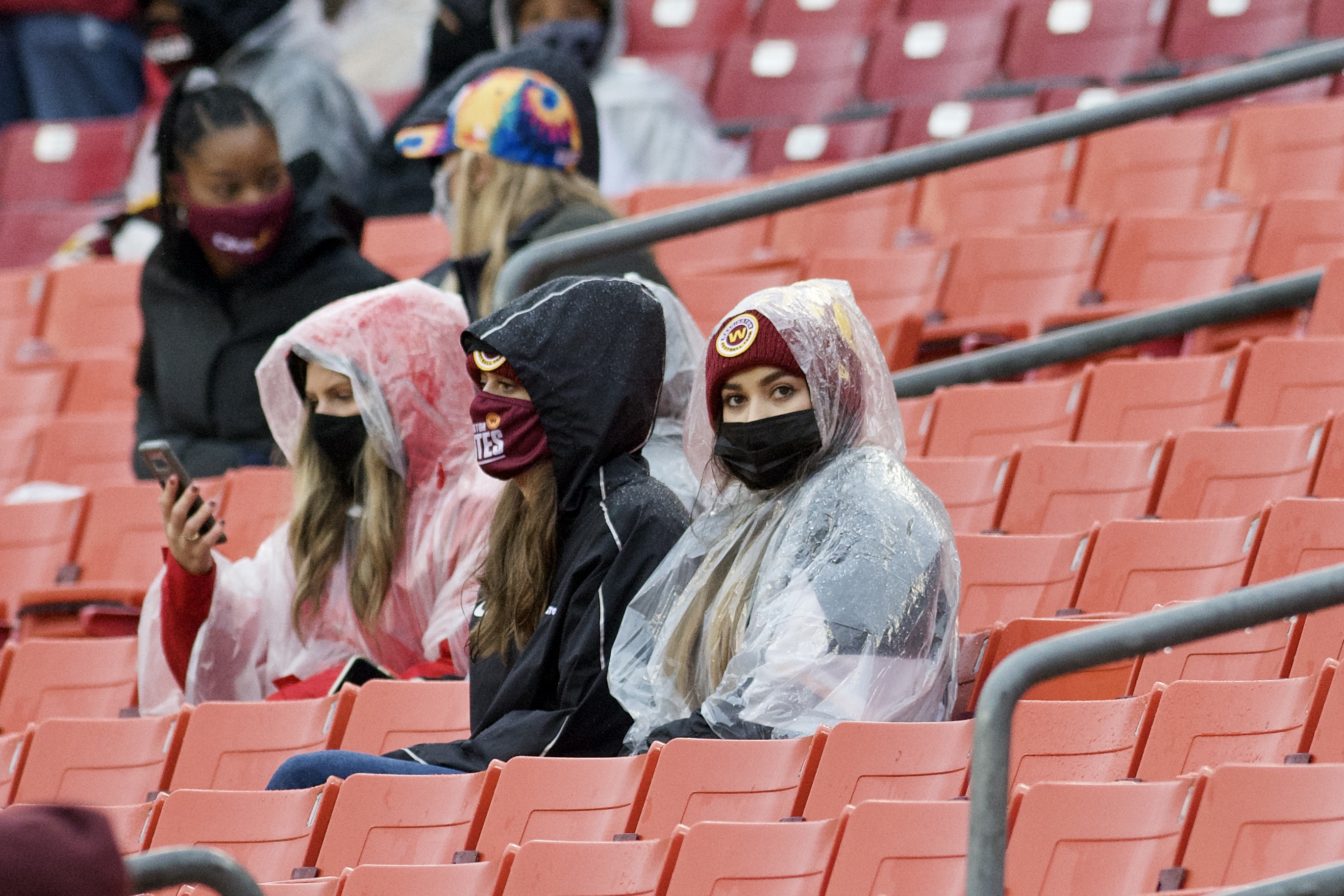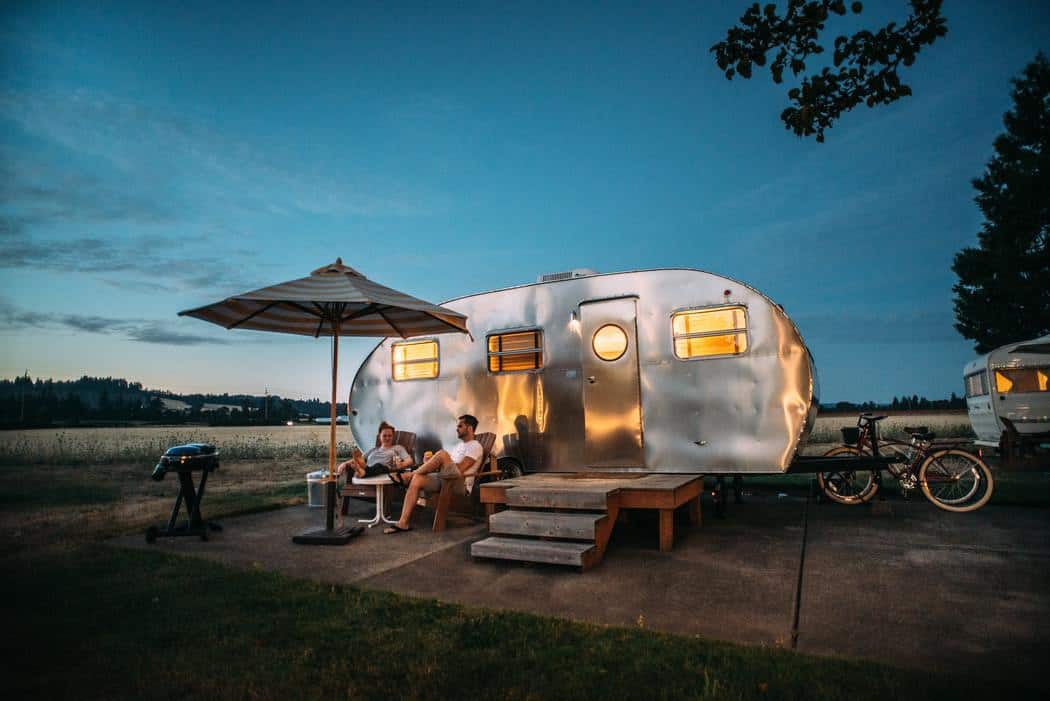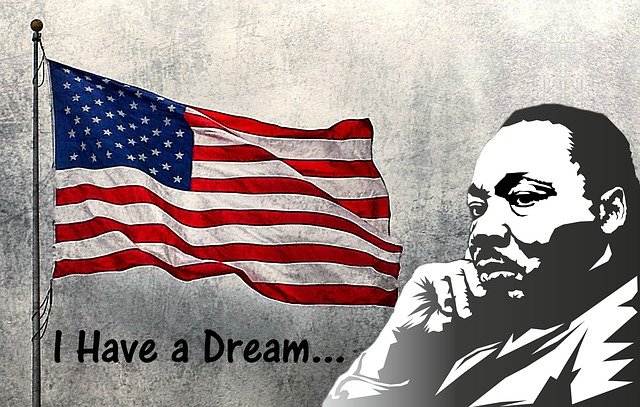Tag Archives:from the library

4
FebThe Thing That Still Happened
 Without a doubt, life has changed significantly for many of us during the COVID-19 pandemic. Changes to the patterns of our lives included taking up new hobbies, taking part in political actions for the first time, becoming Zoom experts, binging shows we never thought we’d watch, and transitioning from mile-a-minute schedules to trying to do everything without leaving our homes. Countless scheduled events were cancelled during the year from family vacations to festivals and concerts to annual celebrations. Or, our much-anticipated events were scaled down or held virtually instead.
Without a doubt, life has changed significantly for many of us during the COVID-19 pandemic. Changes to the patterns of our lives included taking up new hobbies, taking part in political actions for the first time, becoming Zoom experts, binging shows we never thought we’d watch, and transitioning from mile-a-minute schedules to trying to do everything without leaving our homes. Countless scheduled events were cancelled during the year from family vacations to festivals and concerts to annual celebrations. Or, our much-anticipated events were scaled down or held virtually instead.
One thing that wasn’t cancelled? The National Football League. In the vacuum left by so many events that couldn’t be held in 2020, the NFL was our shining “thing that still happened.” And, starved of nearly all the other things I would normally look forward to during the year, I devoured as much football as I could watch.
I didn’t come into the 2020 season a total noob. I was already a Patriots fan on the scale of, “Oh that’s right, the Patriots are playing Sunday, are they the early game this week? Yeah I’ll watch, hope it’s a good game.” The pump was primed, so to speak. However, all my disappointed anticipation for everything else that was cancelled in 2020 was redirected to this national pastime that actually went ahead as planned. The pandemic-induced side effect was that I became the sort of fan that says, “Oh yeah, with Edelman out Cam has no targets. Who’s he going to throw to – Harry?? Their running game is going to be a tough slog against that Kansas City defense, and Cam hasn’t been the mobile quarterback he used to be since that injury. The really interesting game will be the day before though, Chargers v. Buccaneers. The Buccs really loaded their roster with superstars but the Chargers are such an underdog heartbreak team, have you seen their quarterback?” This, delivered with fervent intensity and at volume to an increasingly alarmed-looking coworker.
If that wasn’t bad enough, for the first time in my life I started watching college football. On purpose. Because those college players will soon be entering the NFL draft and the Patriots desperately need a new quarterback (because seriously, Stidham??) and wide receivers, and there’s some dynamite talent graduating this year (fingers crossed for Trevor Lawrence even though I know he’ll be snapped up by the Jaguars or the Jets). See what I mean? Nevertheless I think it finally clicked for me that I was becoming a serious fan when my family said, “Well we won’t call you Sunday because we know you’ll be watching football.” Yikes!
But to put things in perspective, in a year of extreme upheaval in nearly every part of our lives, the NFL did not miss a single game. True, the pre-season was shortened to almost nothing so the first couple months involved a lot of working out the kinks and team cohesion, and we were treated to a few rare Tuesday night games so that matches could be rescheduled, but they managed to squeeze in every single regular season game. Most stadiums did not allow in-person crowds, and those that did were greatly reduced in size, plus all teams and staff followed strict COVID protocols. When you think about all the people, travel, and other moving parts that go into a season of professional football, that’s really pretty amazing.
I’m in good company with my newfound superfandom. Female viewership has been increasing dramatically in the past decade, and as of March 2020 women fans made up 47% of professional football’s fanbase, or about 88 million fans, according to the NFL. Superbowl LIV, played in early February 2020, drew more women viewers than did the Grammy’s, Oscars, and Emmys combined. I’ll be fascinated to see how the numbers shake out after the year we’ve had.
According to Melissa Jacobs of The Football Girl website, this increase in women NFL fans is no accident. The NFL is heavily invested in creating more consumers of football, with their female apparel lines being the NFL’s fastest growing ancillary business over the past few years. It helps that their marketers have awoken to the idea that simply making apparel smaller and pinker doesn’t appeal to many women fans, nor does being patronized with “Football 101” classes targeted specifically at women. Women have been earning their chops in the world of football, from playing on college teams to coaching and scouting in the NFL, not to mention women shining in sports broadcasting and analytics.
Women, myself included, were flocking to football before the pandemic and given the thirst for entertainment, distractions, and regularly scheduled programming this year, I can only imagine we now make up an even higher percentage of the fanbase. If you’re curious about the history of the game, the Morrill Memorial Library has lots of books about how the game is played and highlights and lowlights from football’s past (all found on the second floor in the 796 section), plus biographies of players and coaches, not least of which is Belichick: The Making of the Greatest Football Coach of All Time.
So, is Tom Brady still the G.O.A.T.? Or are the Chiefs (boo, the hated Kansas City Chiefs, hiss) still the unstoppable force they were last year? Join me for Superbowl Sunday and we’ll find out!
Liz Reed is the Adult and Information Services Department Head at the Morrill Memorial Library in Norwood, MA. Look for her article in the February 4, 2021 issue of the Transcript and Bulletin.

28
JanNot a Camper
 Camping has never held much appeal to me. Through twelve years of Scouting, I never slept in a regular tent; two experiences in a tentalow were more than enough for me. We stayed in cabins a few times but they didn’t have plumbing so we had to go to a separate building for the bathroom and shower. Meals were all on the campfire which even as a kid I found to be more work than reward when you factored in cleanup without running water. There was the night when my next-door neighbors and I slept in a tent in their backyard, but it only happened once and we ate breakfast inside after we got up. As an adult when I got together with college friends, we rented a house or stayed in a hotel.
Camping has never held much appeal to me. Through twelve years of Scouting, I never slept in a regular tent; two experiences in a tentalow were more than enough for me. We stayed in cabins a few times but they didn’t have plumbing so we had to go to a separate building for the bathroom and shower. Meals were all on the campfire which even as a kid I found to be more work than reward when you factored in cleanup without running water. There was the night when my next-door neighbors and I slept in a tent in their backyard, but it only happened once and we ate breakfast inside after we got up. As an adult when I got together with college friends, we rented a house or stayed in a hotel.
On vacation in 2007, I saw an Airstream parked on the street outside a design store as an advertisement. I was immediately reminded me of my childhood and eager to explore the interior. Our neighbors (the previous owners of the house where I did actually sleep in a tent) when I was very young had an Airstream. They were also like extra grandparents to me so I got to know their trailer well. Of course I didn’t enjoy camping in a tent; I had been introduced to luxury camping at a young age! Since the company opened in 1931 Airstream has been a luxury travel trailer and a leader in the field. Founder Wally Bynam loved the outdoors and camping, but his first wife didn’t. The Airstream was the result of his attempts to make camping more appealing to her.
Airstream owners are a close-knit community. In the 1950s, founder Wally Bynam began leading caravan trips for Airstream owners. In 1955 Airstream Club International was founded. The group is still in existence and they plan rallies and caravan trips for members. My family went to an Airstream rally with our neighbors. And although I doubt she would have wanted to travel in it, my maternal grandmother was also quite taken with the Airstream, so whenever she visited us our neighbors always had her over for tea in theirs. A few years after they retired, our neighbors sold their house and traveled in their Airstream for a while. When they came to visit they would park it in our driveway. I remember one time when we were all visiting their son and his family at the same time, we young kids got sent out to play with Grandpa and have breakfast in the Airstream so our parents could sleep late.
There are some interesting coffee table books about Airstreams: Airstream: America’s World Traveler, by Patrick R. Foster, Airstream: The History of the Land Yacht, by Bryan Burkhart and David Hunt, Airstream Living, by Bruce Littlefield and Simon Brown, and Tin Can Homestead: The Art of Airstream Living, by Natasha Lawyer and Brett Bashaw. Tin Can Homestead is by a couple who rehabilitated an Airstream to live in as a stationary trailer. Airstream Living provides descriptions of Airstreams owned by regular and famous people, including Aiden Quinn, and includes examples of re-use of the trailers including a hotdog stand in Connecticut, a broadcast studio, and location trailers.
In the 1960s Airstream was contracted to modify four trailers for use by NASA to quarantine astronauts after their return from the moon. The Astrovan used to transport astronauts to the launch pad during the space shuttle era was a modified Airstream motor home. I saw a quarantine trailer at the Smithsonian’s Uvdar-Hazy Center and the Astrovan at Cape Canaveral; sadly, you cannot go into either of them. There has also been some creative reuse of Airstream trailers in recent years. A few years after seeing the Airstream on vacation, I was at a party where one of the bars was an old Airstream; a quick internet search results in numerous locations where one can hire an Airstream bar for events. StoryCorps turned one into a mobile recording studio.
There has been a resurgence of interest in recreational vehicles, a term that includes travel trailers and motor homes, this year with the COVID-19 pandemic. Traveling with your own place to cook, eat, and sleep feels safer to many people. RVs offer most of benefits renting a house does; there is a kitchen so you can do some cooking for yourself rather than having to eat out for every meal. Stephanie and Jeremy Puglisi’s 2020 book, See You at the Campground: A Guide to Discovering Community Connection and a Happier Family in the Great Outdoors is an excellent resource for families considering a family RV trip. According to them, traveling with a camper is typically less expensive than flying, renting a car, and staying in a hotel. The authors provide details about types of recreational vehicles, things to consider when planning a trip, and selecting campgrounds. Like many aspects of the travel industry much of the planning and arranging can be done online now. There are sites similar to VRBO and Airbnb for renting recreational vehicles of all types.
I loved doll houses, so I think part of the Airstream’s appeal was the tiny house concept; the compact nature of a trailer necessitates efficient storage, so there were lots of cool seemingly secret compartments, and of course the shiny aluminum exterior is eye-catching. My best friend, who also happens to be the granddaughter of my Airstream-owning childhood neighbors, and I used to talk about having matching ones when we retired and traveling together. We were well below driving age so had no idea what driving while towing a trailer really meant. I certainly wouldn’t want to drive one in the Boston area or on narrow, mountainous roads. Maybe sometime we’ll rent one at our destination rather than setting off in it from here – if we do it will definitely be an Airstream. I’ll stop at the hotdog stand in Connecticut if I’m in area and if I ever go to Jackson, OH I’ll definitely stop at the Airstream Heritage Center and Museum.
Victoria Andrilenas is a Part time Reference Librarian at the Morrill Memorial Library in Norwood, MA. Look for her article in the January 28, 2021 issue of the Transcript and Bulletin.

21
JanMartin Luther King Day Message
 As January, 2021 dawns, we can certainly say we are living in historic times. We are hoping that the year 2021 is the light at the end of the very long 2020 tunnel. That is most likely everyone’s collective wish for the New Year.
As January, 2021 dawns, we can certainly say we are living in historic times. We are hoping that the year 2021 is the light at the end of the very long 2020 tunnel. That is most likely everyone’s collective wish for the New Year.
The historical figure whom we honor and celebrate in January is Martin Luther King, Jr. who would have turned 91 years old this month on January 15. His life and legacy is taught to school children and recalled by those of us old enough to remember. Although the details of his are life interesting, in these tumultuous times, it is his message that needs to be remembered. His dream was that one day all races would be treated equally. Yet, today, many decades later, it seems that his dream has not come to fruition.
Reverend King was not a stranger to tumultuous times and one can’t help but wonder what he would have thought today. It’s likely that his dreams and advice would remain the same. The French writer, Alphone Kerr, said “the more things change, the more they stay the same.”
Reverend King was a hero of the 60s. He was a Baptist minister and a civil rights activist who preached for equal rights, desegregation and, most of all, nonviolence. I am old enough to remember the riots, the antiwar demonstrations and the civil rights protests. In 1968, he was shot and killed while standing on a balcony outside his motel room in Tennessee. He was 39 years old.
Many books have been written by Reverend King, himself, as well as about him. King’s fourth and last autobiography, Where do We Go From Here: Chaos or Community? concentrates on his experiences during the mid-1960s shortly before his 1968 assassination. He rejoiced that the Civil Rights Act of 1964 prohibited segregation and the Voting Rights Act of 1965 gave African Americans the right to vote. However, he continued to fight for the right to adequate housing and income, and quality education. He questioned the existing economic system that was hurting the black community, especially in Chicago. At the time, the country was not only dealing with civil rights, but the war in Vietnam.
Vincent Harding, African American writer and historian, said in his introduction to Where do We Go From Here? that at the writing of the book, King was posing the questions, “Who are we and who are we meant to be?” King himself was quoted as saying, “our most fruitful course is to stand firm, move forward nonviolently, accept disappointment and cling to hope.”
Peniel E. Joseph observes in the most recent book about Reverend King, The Sword and the Shield: The Revolutionary Lives of Malcolm X and Martin Luther King, Jr., that “Today, more than fifty years after King’s death, the struggle for racial justice continues in ways that are both historically recognizable and disconcertingly new.” Joseph presents detailed biographies of both men, their contrasting ideals, but also, the similarities between their political goals. The common interpretation of both men were how different they were in message and strategy. Joseph maintains that in time they evolved to a place where they were more alike toward the end of their short lives. Malcolm became less militant and more interested in human rights issues and King became more radical after Malcolm’s assassination. Shield argued that portraying Malcolm as wielding the sword in pursuit of black dignity and King carrying a shield for the defense of black humanity was only part of the story. He maintained that Malcolm and King, who only met once, began as rivals but developed a later partnership.
By reading books, watching documentaries, and continuing to learn, history can show us perspective. The words and acts of past inspiring leaders do matter in the present if we listen. Vincent Harding maintained that Martin Luther King Jr. was seeking “a perfect union – a path that challenges us all” and, obviously, continues to do so.
Norma Logan is the Literacy Volunteer Coordinator at the Morrill Memorial Library in Norwood, MA. Look for her article in the January 21, 2011 issue of the Transcript and Bulletin.

14
JanMind Your Habits
 It’s that time again – you know, when we all make well-meaning declarations for improvement in the coming year. Our New Year’s resolutions might have us vowing to exercise more, drop a few pounds (the Covid 15) or read a book each week. Yet even when the task is as fun as reading, many of us abandon our goals in a dishearteningly few weeks, all the while wondering: What’s wrong with me?
It’s that time again – you know, when we all make well-meaning declarations for improvement in the coming year. Our New Year’s resolutions might have us vowing to exercise more, drop a few pounds (the Covid 15) or read a book each week. Yet even when the task is as fun as reading, many of us abandon our goals in a dishearteningly few weeks, all the while wondering: What’s wrong with me?
As it turns out, it’s not you, specifically; there’s just a flaw in the human system. Strength of will, much like muscle strength, is a resource that can be developed with use. That being said, like muscle strength willpower gives out if over-taxed. So while we should employ willpower regularly to keep it strong, it’s useful to follow the adage of working smarter, not harder. A long time ago I noticed that my willpower concerning junk food is directly related to proximity. Kept in the house, it always entices and I must mentally keep resisting. So I don’t keep it around. This practice has helped me stay in shape but I never analyzed why it works until I discovered James Clear’s Atomic Habits: Tiny Changes, Remarkable Results. Clear explains how habits are formed and how we can be more intentional about the process. In addition to being a useful guide it is an interesting read, woven throughout with illustrative anecdotes.
The book opens with the gripping if grim account of how, as a high school sophomore, Clear was accidentally hit in the face with a baseball bat. His injuries were traumatic and his recovery slow, as was his return to baseball. Given that he began his college career at the bottom of the team’s roster, he switched his focus to building simple habits like going to bed early and keeping his room tidy. This gave him a sense of control; it also had an impact on his study habits. He then began lifting weights. By graduation he had been selected as his university’s top male athlete, and awarded its highest academic honor. Clear later drew on his experience to begin writing about habits in a biweekly blog, which eventually led to this book. In it, he presents information across multiple fields, noting that he is offering a synthesis of existing ideas. His intent is to make them actionable. Clear first identifies the four components that comprise a habit: the cue, the craving, the response and the reward – terms that may sound familiar to readers of Charles Duhigg’s book The Power of Habit. These steps link together to form a habit loop, or automatic response that occurs without conscious thought. That might seem a little sinister but take heart, dear ones: the automatic nature of habits can also be used to curb bad behavior. The key is to recognize what is driving us and then assume control of the wheel. By interrupting the cycle, we can break a bad habit, however deeply ingrained it may feel; we can also create conditions that will reinforce the adoption of a new habit. If all this sounds a bit dry, please attribute that to my description not the work itself. This book is one of the best I’ve read from this genre in that the anecdotes woven throughout are an interesting read in their own right.
The breadth of Clear’s system cannot be covered in the length of an article (if it could, I’m certain he would’ve done it.) Instead, I’ll highlight a few of the points that had the most impact on this veteran of the habit wars. Simple as this will sound, one of the ways in which we can reinforce a habit is to identify a time and a place when we expect it to occur. He notes that all too often people are vague about their goals (to get in shape, to read more) and that this vagueness is what inhibits the action from happening. The more specific a person is, the more likely the habit will occur. For example: I will go to the gym Tuesday at 10 o’clock and lift weights for a half hour. The phenomenon of specificity is not just limited to, for instance, physical fitness goals; one study showed that people who were asked about what route they would take to drive to the polls were actually more likely to vote.
One other method that Clear suggests is habit stacking, a method of pairing habits derived from the work of behavior scientist BJ Fogg. Instead of assigning a day and time for a task, you would do it following an action you routinely take. This sounds like the same thing as assigning a time, but it’s not. I tried habit stacking, and can attest to the fact that it succeeded where my previous attempts had not. I have been meditating on and off for years. This practice lowers my stress, increases my happiness and keeps me centered, but somehow it kept getting shuffled to the background. Until, that is, I paired it with a deeply ingrained existing habit: every day after I turn on the coffee pot, I meditate for ten minutes. Happily, I’m several months deep into this daily habit, the continuity of which I attribute not just to habit stacking but to the third tip I will share from Clear’s book: it’s fine to start small and increase the time commitment of your habit after it is established. Regular meditation eluded me in part because I didn’t have the hour (or half hour, or twenty minutes two times a day, etc.) recommended. Although I plan to increase the amount of time I sit, for now I’m pleased with my progress.
For a deeper dive into how you can wrangle your habits, read the book in its entirety. I recommend the audio version, which is enjoyably read by the author and available digitally or as a book on CD. The author provides numerous supporting resources, referenced throughout the book, on his website jamesclear.com.
Kirstie David is the Literacy/Outreach Librarian at the Morrill Memorial Library in Norwood, MA. Look for her article in the January 14, 2021 issue of the Transcript and Bulletin.

7
JanCrafting with Kids at Home
 Being at home, with little opportunity to go out to museums and play spaces, many families have been looking to do more projects at home. As a Children’s Librarian and crafty lady, I am here to help! The library has programs, such as our Take + Make craft bags or 5 Alive! toddler sensory kits, that you can pick up and bring home to work on with your kids. We provide the materials and instructions, so you can just let the kids explore without having to plan another activity yourself.
Being at home, with little opportunity to go out to museums and play spaces, many families have been looking to do more projects at home. As a Children’s Librarian and crafty lady, I am here to help! The library has programs, such as our Take + Make craft bags or 5 Alive! toddler sensory kits, that you can pick up and bring home to work on with your kids. We provide the materials and instructions, so you can just let the kids explore without having to plan another activity yourself.
Maybe you want to do more, but are not sure where to start. Sometimes as a parent, it can feel like you are supposed to magically have all the crafting ideas and knowledge you didn’t have when you were a single adult. Starting out can be overwhelming! There are so many videos, blogs, and books out there, not to mention the materials to comb through. So let me walk you through setting up a decent project area for your family to enjoy.
First off, you do not need tons of space. I have lived mainly in apartments for my adult life, and had very little extra space. You will need a shelf or two in a closet or cabinet, or you can use a plastic tote to store your supplies. You need an area to create in, but that could also be your kitchen table, basement floor, tv tray, or anywhere else you have space to work.
Second: supplies! This is my favorite part. To begin with you only need a few things: white and multicolored paper, pencils, crayons/markers, scissors and glue (sticks or white.) If you already have this and are looking for a little more, my other suggestion would be paint – watercolor is the least messy, as well as brushes, tissue paper, pom poms, craft sticks, and tape. Then, get a little creative – what else do you already have? Cotton swabs, paper plates, cotton balls, magazines and empty cereal boxes are all supplies that can spark your child’s imagination. You don’t have to spend tons of money – go to the dollar store or look in your recycling.
The third step is your mindset. This may be the most important part, because if you realize this before you begin a project, it is going to save you a lot of frustration. What is the outcome you are looking for? Do you want to teach your kids something? Do you want to let them explore? Do you want to have a product at the end? Do you want to work together or let them work independently? This may seem obvious, but those questions will determine how you present the materials to your kids.
For example, if you want to make a birthday card for a friend, you would put out paper and something to color or draw with. You would expect the paper to be flat or folded in half, with a picture or a message on it. You could put out more paper or paint or pom poms, but you want it to be a card at the end. Now, what if you wanted to teach your child about watercolors? You might take out different papers and brushes and the watercolor paints. You may show them a picture painted with watercolors. Or you may just place the stuff on a table and let them go. But the expectation is they will have an experience with using watercolors. What if you just want to let them explore? This is called process art, and for some people, this can be more difficult than following directions. Process art is the idea that the process of making something is how we learn, and the end product doesn’t matter. You put out the materials, step back, and let the kids go. If you have glue, pom poms, glitter, paint, markers, cotton balls and paper plates out, try to resist the urge to tell them what to do and how to do it. I know, this can be so hard! But the idea is to let them learn by exploring and figuring it out themselves. They may dip that marker in the paint to see what that does. It may turn out beautiful, or you may need to throw out that marker. If you mentally prepare beforehand, it won’t be as difficult in the moment.
That is not to say there can’t be rules! You don’t have to let them draw on the wall or dump out a whole container of glue. Put an old sheet down or give the kids oversized t-shirts if you are worried about making a mess. Sometimes, a blank paper can be intimidating, and you may need to encourage your kids with a theme or idea. Try saying, “what can you paint a picture with that isn’t a paintbrush?” or “let’s design a space car!” Usually that is enough to get the wheels turning.
I find the books The Artful Parent, Creative Family and Play, Make, Create, A Process Art Handbook great for ideas on how to integrate art activities into your family life. Art Lab for Kids and Playing with Collage can provide a little background on different art materials and projects, and each is fully illustrated with examples to inspire the whole family. There are a ton of craft books out there that list step-by-step instructions for projects for every age, and Pinterest is a website where I always find inspiration. Popular blogs like redtedart.com and tinkerlab.com also offer up ideas for kids.
It can be easy to feel overwhelmed, especially when you don’t feel crafty yourself. But don’t take it too seriously; use the materials around you, and try seeing it through your kid’s eyes. They may even teach you something.
Nicole Guerra-Coon is the Assistant Children’s Librarian at the Morrill Memorial Library in Norwood, MA. Look for her article in the January 7, 2021 issue of the Transcript and Bulletin.
